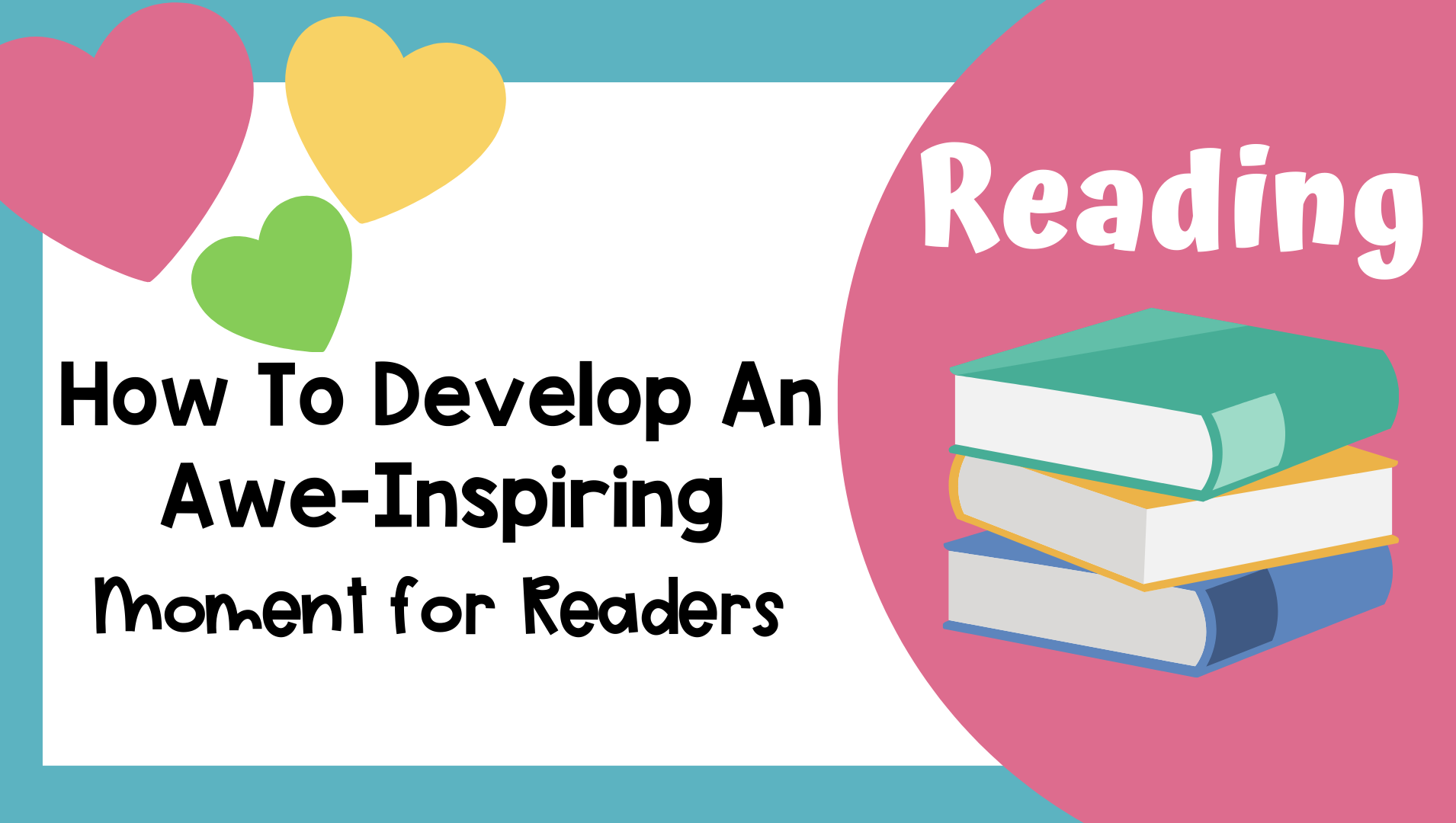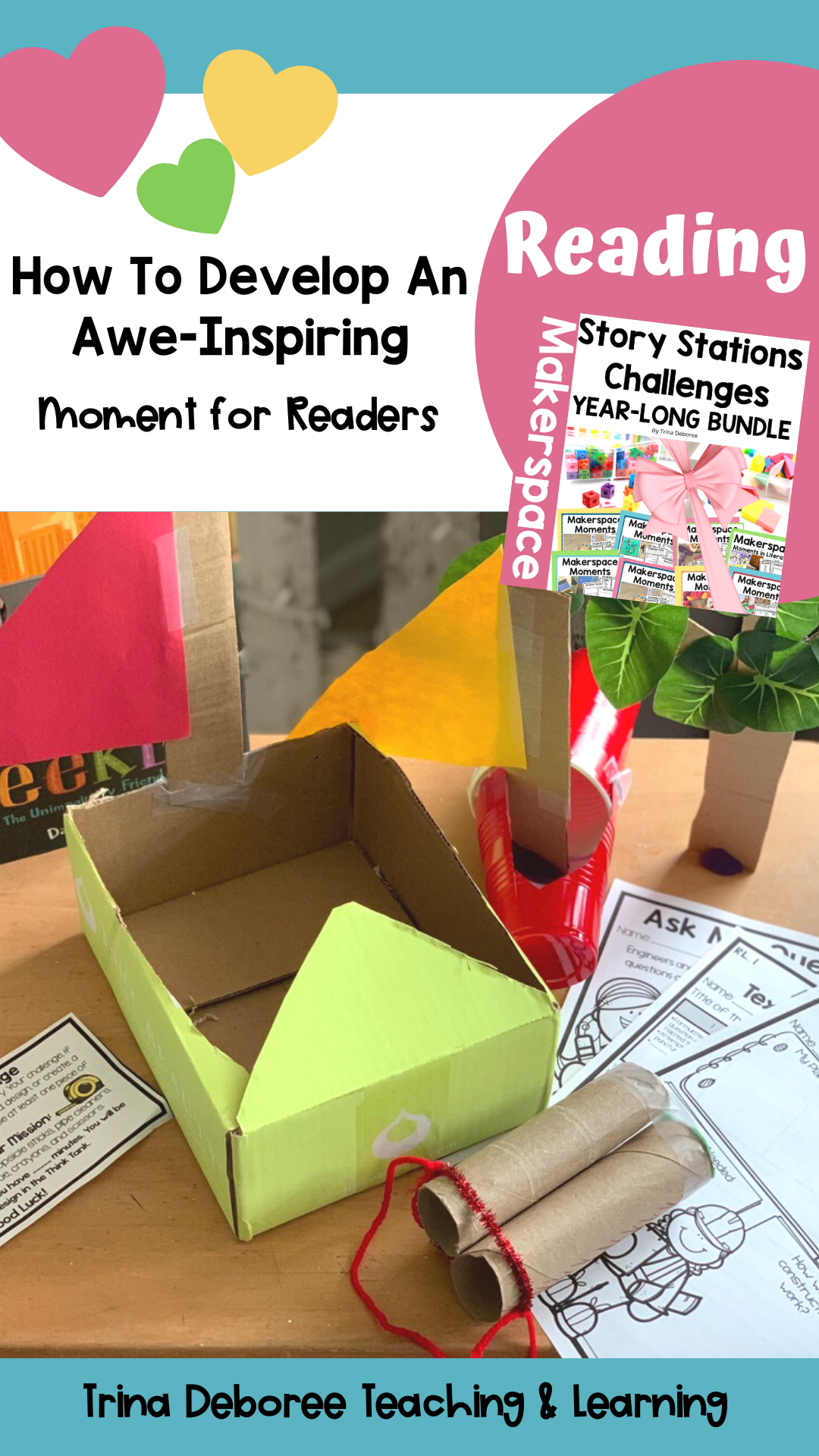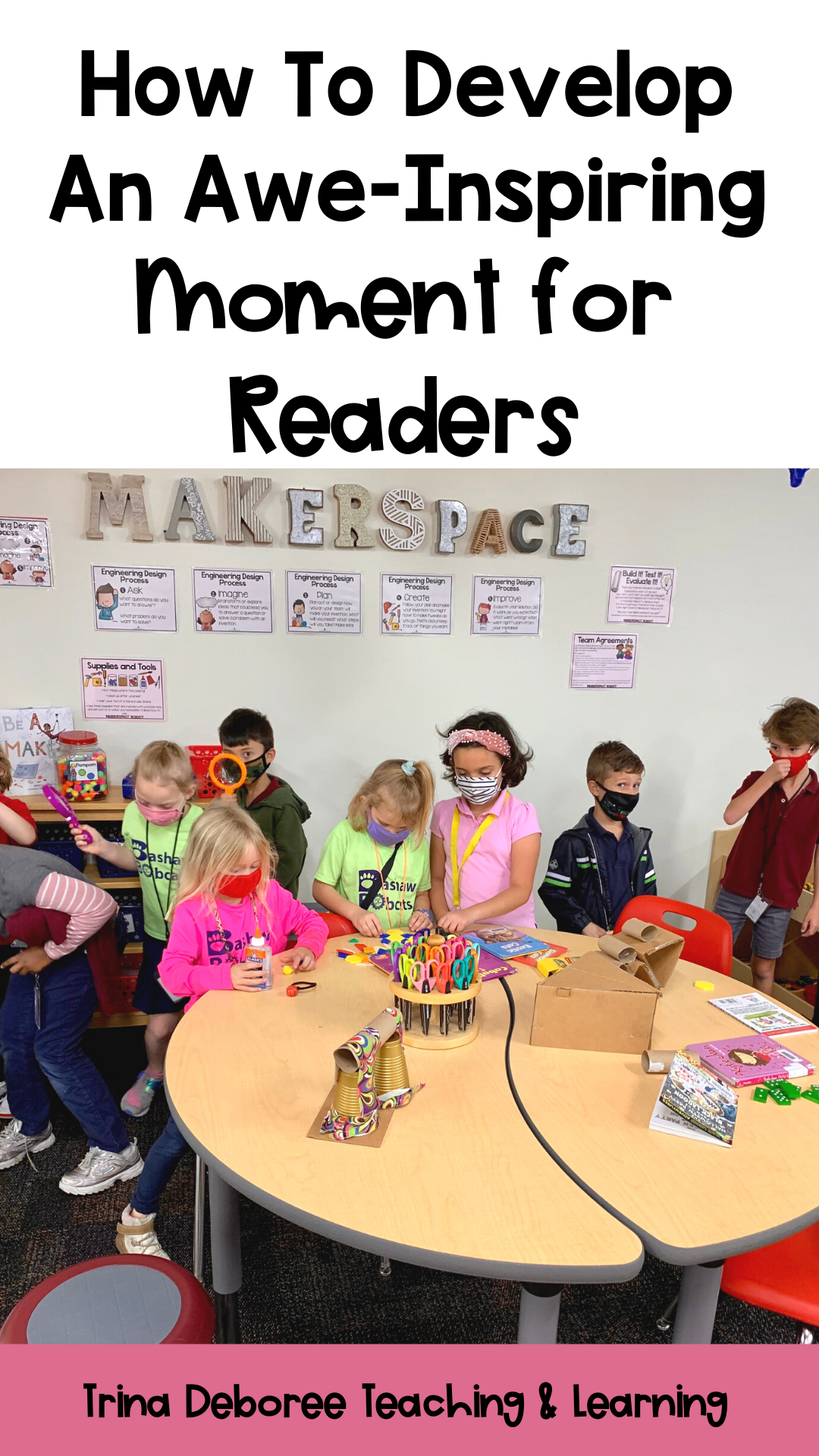How To Develop An Awe-Inspiring Moment for Readers
There is a great deal of conversation around kids not reading.
Many people say that electronics are pulling our kids away from reading. There have been studies by Common Sense Media that show kids reading a good book less and less. However, I am not sure that is true. Even if we did blame electronics or TV, for that matter, we would see that most kids are reading screens more and more. Does the platform matter as much as the actual act of reading? Probably not.
Honestly, I think what matters is that we are losing the love of reading.
Yes, kids are still reading. But WHAT are they reading? Since implementing the Common Core, there has been a considerable shift to nonfiction during story time. Yes, I think that is important. I believe it is necessary to educate our children and ourselves, and I also realize that, as a nation, we are behind in the area of math and science. So a shift to nonfiction makes sense in some aspects.
However, haven't we gone a little too far in our quest for informational text?
Consequently, great books are sitting on our shelves, growing dusty. Without fiction, we are losing the support or conditions that will prompt students to continue reading and thinking in the best ways. Most importantly, children are missing out on opportunities to fall in love with characters and stories in their favorite books.
As a first and second-grade teacher for more than 18 years and then a media specialist, I have seen with my own eyes the benefits of reading and what good literature can do for children, especially for our most reluctant readers. Great stories draw readers in and hook them. Without fiction, we are losing a generation of readers who have a love of books and a love to read for the pure joy of reading lots of books.
Another troubling thought that occurs to me concerning fiction is the role it plays in helping readers expand their empathy for others. There is indeed enough evidence in our world today that demands the need to intentionally cultivate compassion, and then there's evidence that people are reading less fiction than they ever have; and so I'd suggest that within our decision-making circles, we intentionally and strategically incorporate literature into a book club or nooks and crannies of our classrooms and bookshelves where children can read about their favorite characters and make positive associations.
So how can we bring good stories back into our classroom?
We know we need to, but how can we justify it to the powers that be? With the current focus on STEM (Science, Technology, Engineering, and Math), I believe we interweave literature. I realize that The Next Generation Science Standards were written to integrate science and engineering, and the hope was not to separate the two fields. However, young children need to experience the engineering design process in a multitude of ways to better understand the significance of critical thinking and problem-solving.
How To Develop An Awe-Inspiring Moment for Readers
Developing an awe-inspiring moment for readers is how Makerspace Moments in Literature came to life based on a picture book, read-aloud time, and a child's love of a good story. The idea of creating, building, designing, and imagining paired perfectly with inspiring stories. Most great stories have a type of problem and solution framework. So why not use them to catapult the engineering design model while encouraging avid readers at an early age?
Locate the Perfect Book
The first step in creating a magical reading experience is to locate the perfect book, whether the books are board books, graphic novels, or any book that is just plain reading fun. Since there are virtually millions of spectacular books to choose from, that part is pretty simple.
Bring the Story to Life
My students adore my use of different voices to represent the characters in a story. It's like my dream of being an actor becomes a reality at these moments. Read-aloud was always part of my daily routine. I think I love it just as much as they do.
Focus on Literacy Skills by Tying Standards to the Story
There is so much goodness to be found in Close Reading. Close Reading takes a story or piece of text and allows the reader to reread segments or sections of text and focus on various standards, such as the feelings of the main character and how they change throughout the story. You take parts of the story and reflect upon them. You pull things out of a book to talk about or further investigate. {In much the same way, we watch movies and TV shows again and again to focus on areas we missed the first time.}
As soon as I discovered Close Reading, I then saw it everywhere! Even at church. When my pastor used scripture, he didn't reread the entire Bible to us. He read a section. We dissected a small amount of the text. It was powerful. And it helped me understand and comprehend the text in a much deeper and more profound manner.
Whatever literature standard you are working on can be taught with most stories. Now apparently, some books work better for some standards than others. When you are covering character standards, you will want a book with good solid characters. When you are covering the point-of-view, you will want books that are more obviously told from a specific perspective- especially for younger students and when you are first teaching this standard. {Point-of-view can be a little abstract, making it harder for kids to understand completely.}
Develop an Awe-Inspiring Moment
Finally, the most awe-inspiring moment is a good thing and challenges kids to build something that solves the problem in the story. Or you may even want them to improve upon a solution that may already exist. Giving kids the chance to ask questions, imagine, plan, create, and improve gives them a hands-on creative opportunity to think critically and problem-solve.
The power of Makerspace Moments in Literature is remarkable. Building around a story fosters a positive attitude and creates better readers, as they focus on the most important thing about reading- comprehending the text. For me, it feels like a way to add excitement back into the school day. It feels a little like play, which is vital for kids.
Want more information on how to launch a Makerspace? Read 5 Fundamental Ways to Launching a Sensational Makerspace.
You don't need a makerspace. You can bring materials in for your makerspace moments. I believe in makerspace, but I get how hard it can be to add one more thing to your plate.
If you are interested, I have recently launched a MakerSpace Moment In Literature All Year Bundle. This bundle contains SEVENTEEN makerspace moments and takes you from the beginning of the year until the end of the year. The link is below.
I hope you feel as inspired as I do to bring quality literature back into everyday life. The empathy level and level of reader satisfaction are guaranteed to improve when you add building and creating into your read-aloud.
As teachers, we strive to encourage lifelong readers. Adding new books, allowing students to create based on their own stories and finding children's books that inspire creativity is just the starting point.
Giving kids a cozy time to read is also a good idea. Next thing you know, a wonderful thing will happen- a child will become a book lover!







